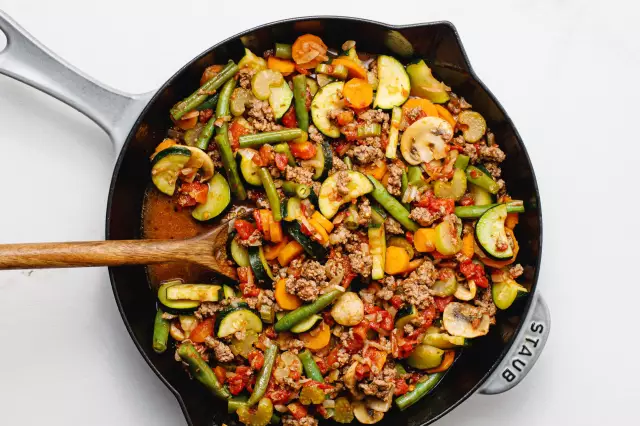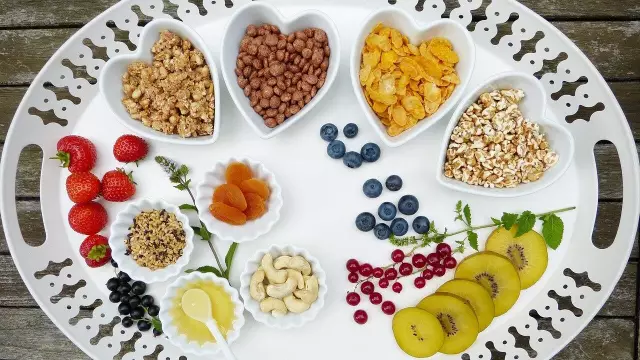- Author Rachel Wainwright [email protected].
- Public 2023-12-15 07:39.
- Last modified 2025-11-02 20:14.
How to organize student meals?
The life of a modern child is extremely active and complex. The information load that the student is experiencing was never dreamed of by the students of the past. Caring parents, wishing well for their children, organize many additional activities in clubs, sports clubs and music schools. In such a situation, the child needs constant care and good nutrition in order to maintain health and high performance.

Source: depositphotos.com
Healthy Diet Is the Basis for Health and Academic Success
The child's nutrition should be regular, balanced and healthy. Protein, fat and carbohydrate content should be maintained in a ratio of approximately 1: 1: 4. It is important not to overload the diet with sweets, fried and smoked foods, saturate it with fresh vegetables and fruits. Health promotion and mental activity are promoted by:
- vitamin A. Helps to maintain vision in conditions of increasing stress. Found in carrots, butter, fatty fish, sorrel, red bell peppers, tomatoes. Absorbed only in the presence of fats;
- zinc. Helps strengthen memory. It is part of seafood, hard cheeses, poultry and lean beef;
- choline. Optimizes the functioning of nerve cells. Its sources are legumes, cottage cheese, liver, rice, oatmeal, liver and eggs;
- proteins. "Building material" necessary for the creation of cells in a growing organism. They are rich in lean meat, fish, dairy products, legumes. Vegetable and animal proteins should be present in the student's diet in a ratio of 2: 3;
- useful carbohydrates. The main source of energy. They are found in large quantities in potatoes, cabbage, cereals, grapes, high-quality pasta.
The fats that a child consumes should be predominantly vegetable (they are better absorbed). In addition, dairy products and nuts are suitable as a source of fat.
Homemade food and school breakfasts
Many mothers consider themselves too busy to prepare full-fledged homemade food every day and make their task easier by buying convenience foods. It is convenient, but alas, not very useful, especially for children. Ready meals that only need to be reheated contain too much salt, various seasonings, artificial flavors, stabilizers and other additives that can be harmful to health. In addition, substances such as flavor enhancers are addictive and can lead to rejection of any food that does not contain them.
It is much more correct to teach a child from an early age that homemade food is tastier, more beautiful and healthier than any fast food. It's not as difficult as it sounds, and with some skills, it doesn't take a lot of time.
Schoolchildren need to eat at least 4 times a day, and the total calorie intake of foods should be at least 2300 kcal for toddlers under the age of 11, 2500 kcal for children from 11 to 14 years old and 3000 for adolescents from 14 to 18 years old. If the child is actively involved in sports, the daily rate is increased by 300 kcal. At the same time, it is very important that he receives at least one hot dish for breakfast, lunch or dinner.
Some parents complain that their children refuse to eat in the morning, limiting themselves to a cup of tea. Lack of appetite can be due to the fact that the child does not get enough sleep, eats in the evening shortly before bedtime, or gets too high-calorie food at dinner. The situation needs to be corrected, since not eating breakfast at all is very harmful. It also makes sense to pick up a few light meals that the child will like so much that he will still get used to eating in the morning.
Many elementary school children come home for lunch, but some attend after-school groups and lunch at school. Often, due to the workload, high school students have to do this. In such a situation, it should become a special concern of parents to find out the quality of food in the school and the correspondence of the diet offered there to the needs of the children.
If school food does not deserve parental approval, the child has to take breakfast with him daily. It may include:
- fruit;
- yogurt or curd;
- sandwiches with boiled meat, chicken breast or cheese;
- homemade baking.
Be aware that it can be hot in the school premises and choose foods for breakfast that will not spoil within a few hours. In addition, it is imperative to give the student with him non-carbonated drinking water, tea or compote.
Mom needs to think carefully about how to package the foods that go into school breakfast. You can put them in a special container so they don't wrinkle or stain your textbooks. A good option is wrapping in cling film: then the child can eat without touching the food with his hands. This is very important, because some children, when outside the home, forget to wash their hands before eating.

Source: depositphotos.com
Harmful "snacks"
For parents seeking to instill in their children the habit of healthy eating, a separate problem is the products that their children buy on their own at school or in stores, returning home after class. These are all kinds of "snacks" that not only contain a lot of harmful additives, but also reduce appetite. However, in many cases, adults themselves are to blame for the addiction of children to food of this kind. It is believed that children who in early childhood were rarely treated to purchased sweets and other harmful products, growing up, are indifferent to them.
In any case, the following are excluded from the student's diet:
- fast food;
- flavored chips, crackers and croutons;
- lollipops;
- chewing gum;
- sweet carbonated drinks;
- packaged juices.
Canned food, smoked meats, sausages, fatty cakes and pastries can be given to children only occasionally and little by little.
Responsibility for the child's health and academic success lies solely with the parents. It is they who must competently organize the schoolchild's nutrition, providing him with everything he needs and excluding harmful and dangerous products.
YouTube video related to the article:

Maria Kulkes Medical journalist About the author
Education: First Moscow State Medical University named after I. M. Sechenov, specialty "General Medicine".
Found a mistake in the text? Select it and press Ctrl + Enter.






